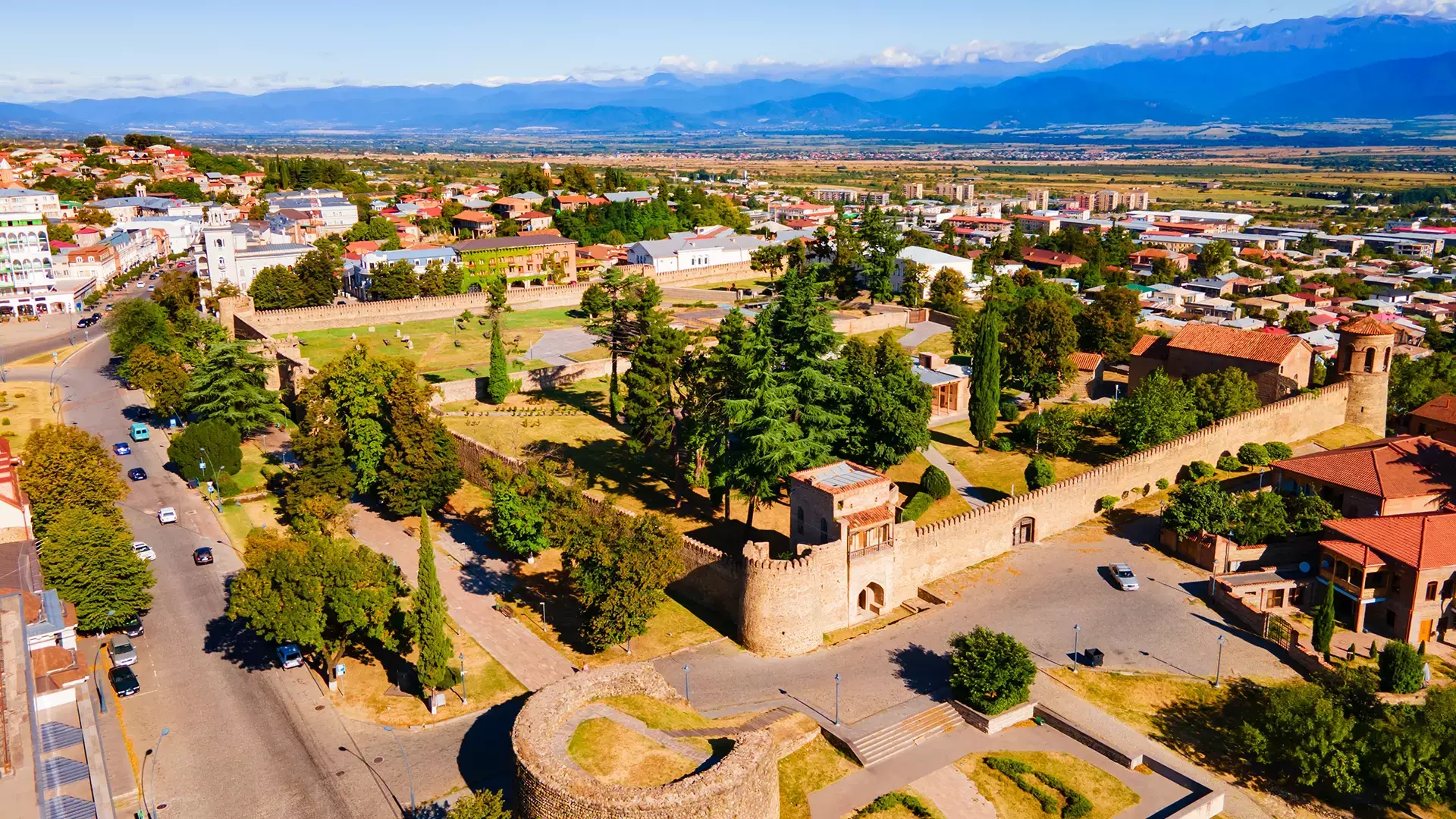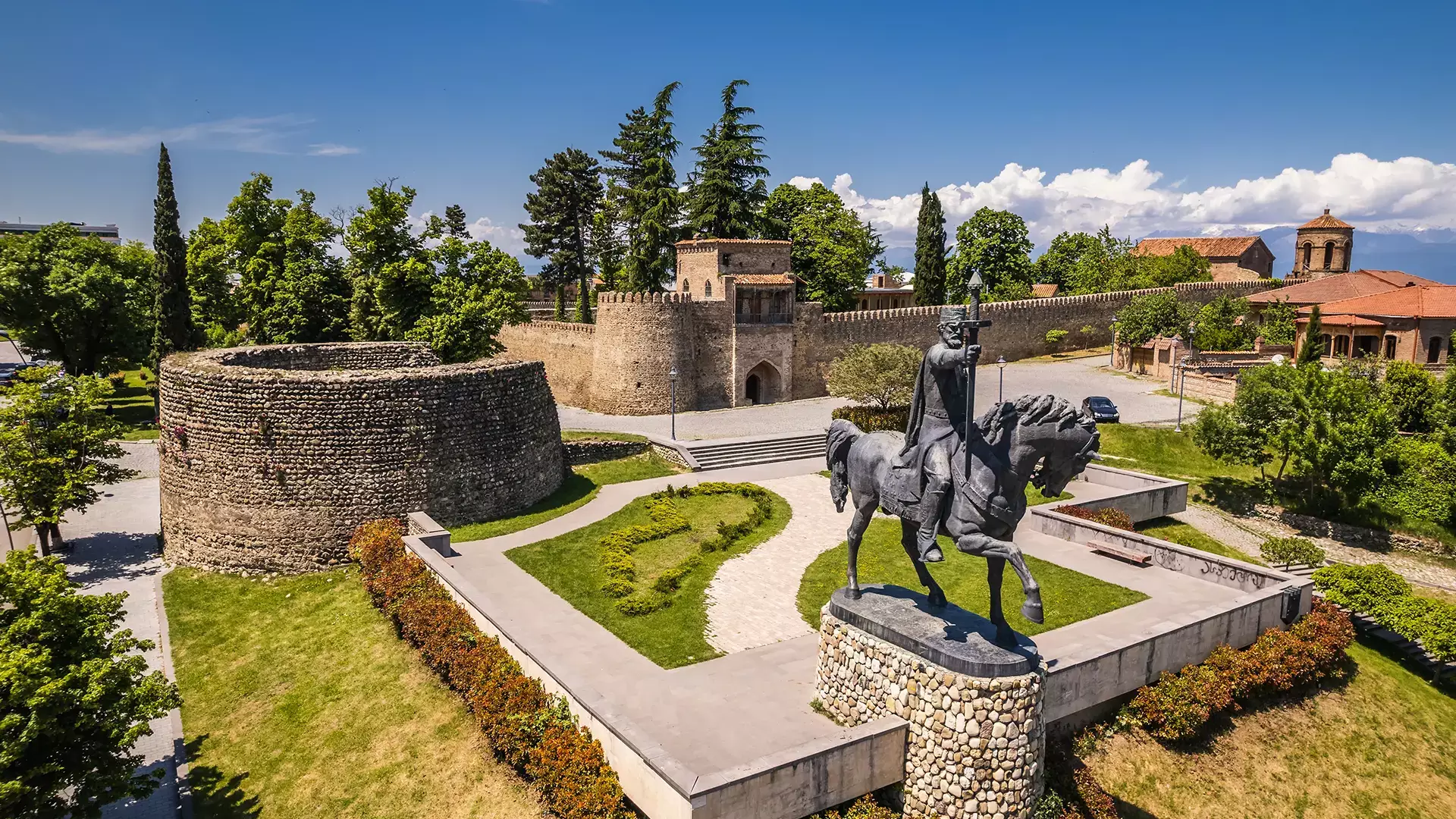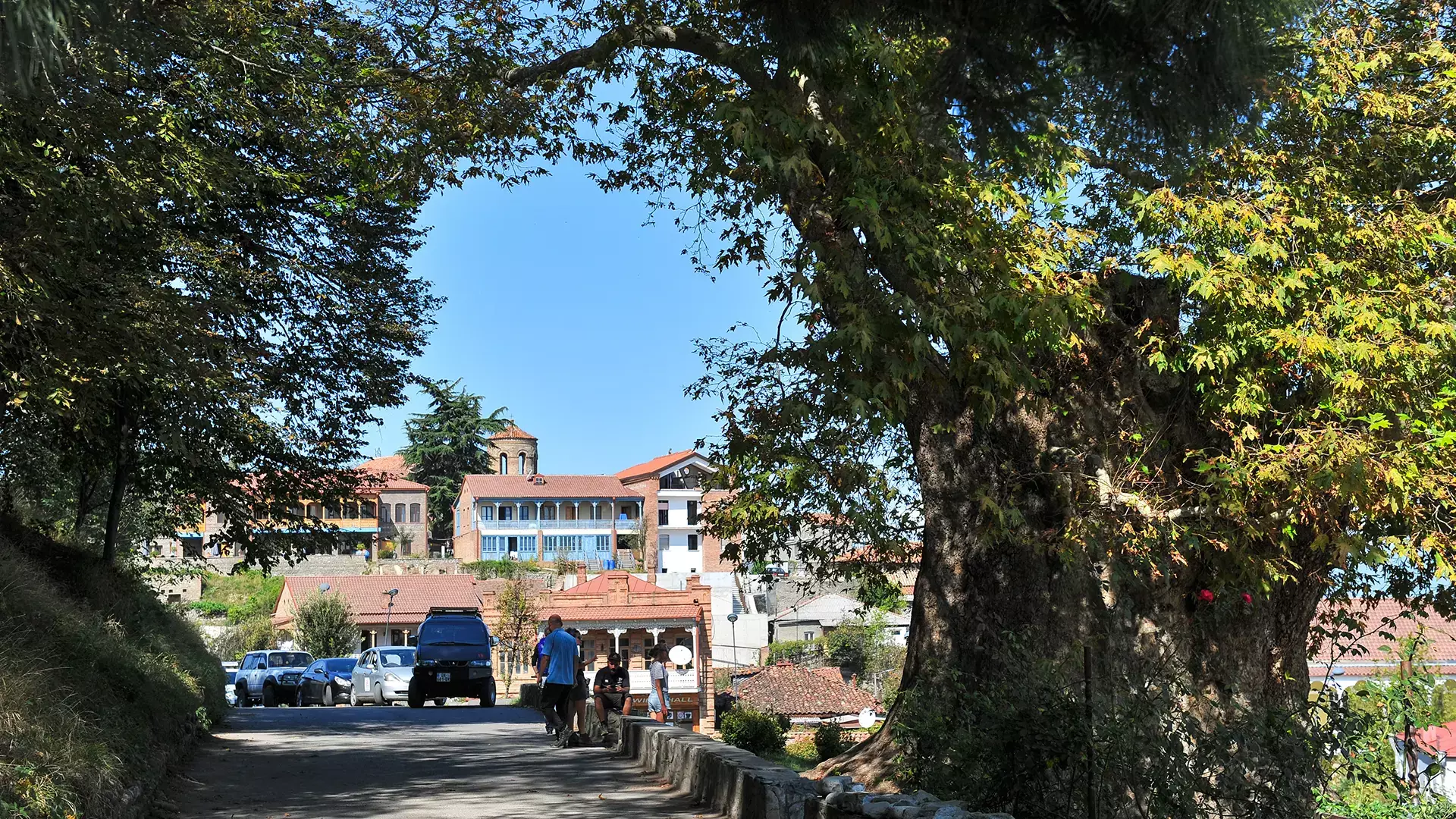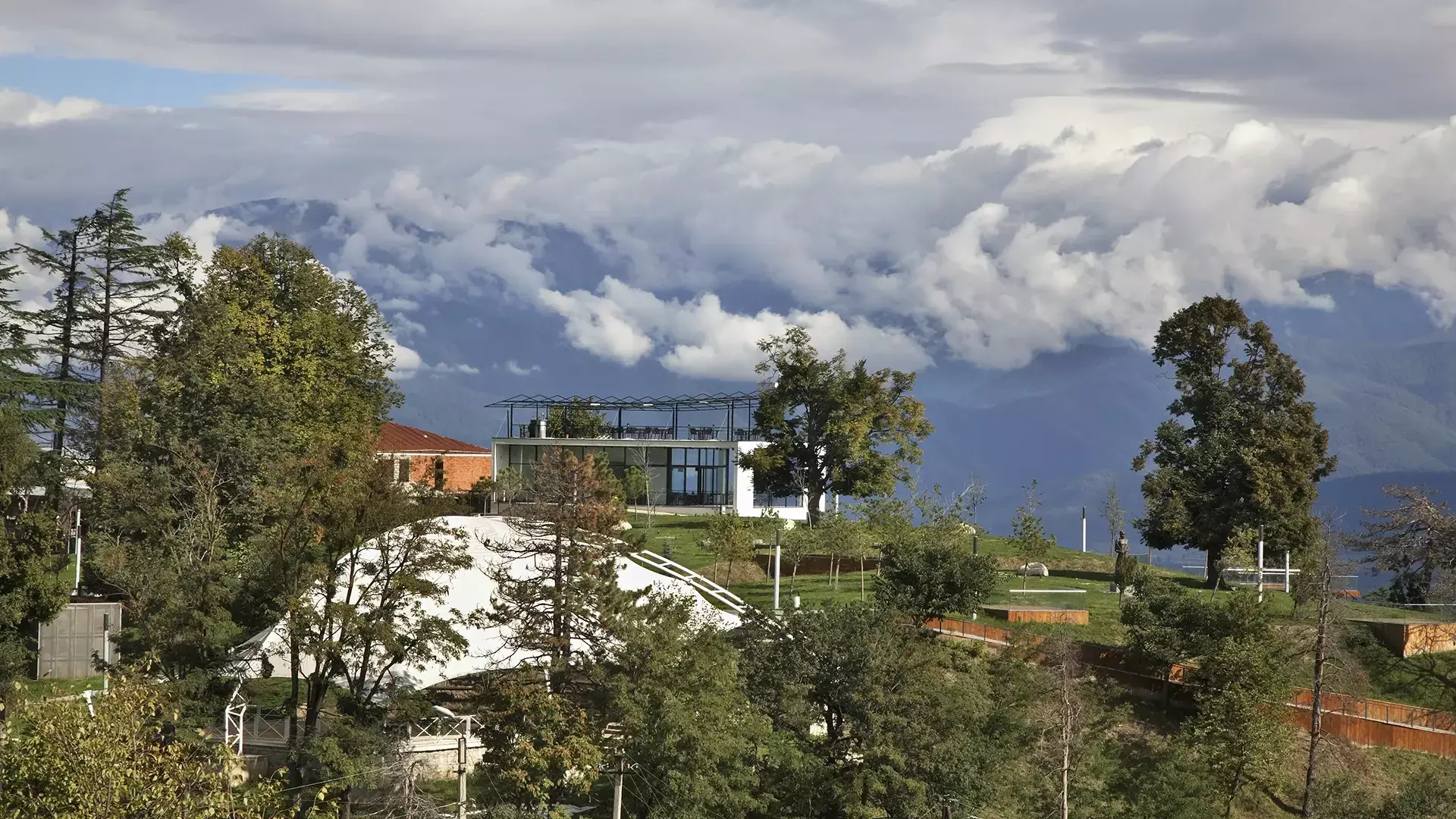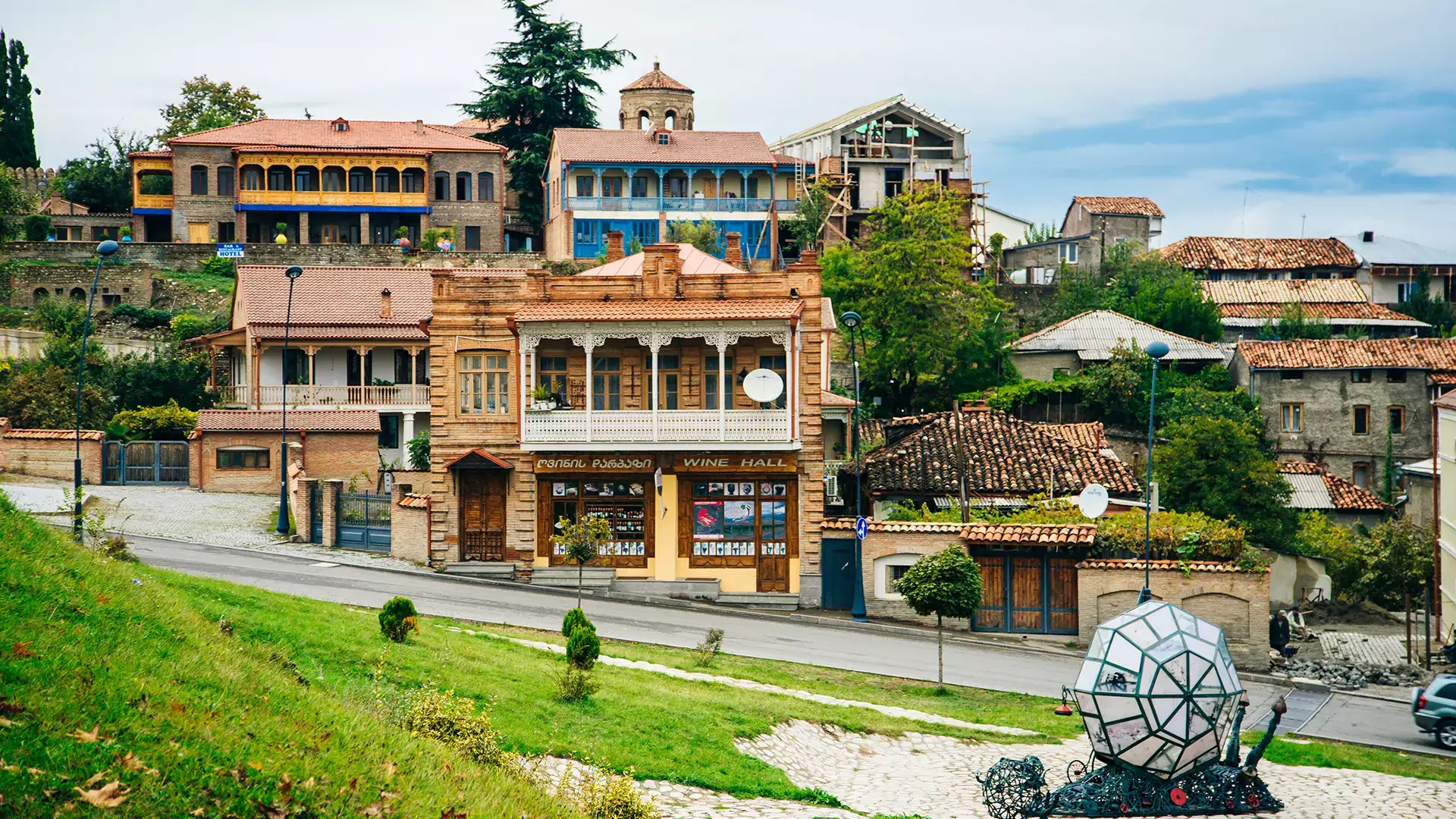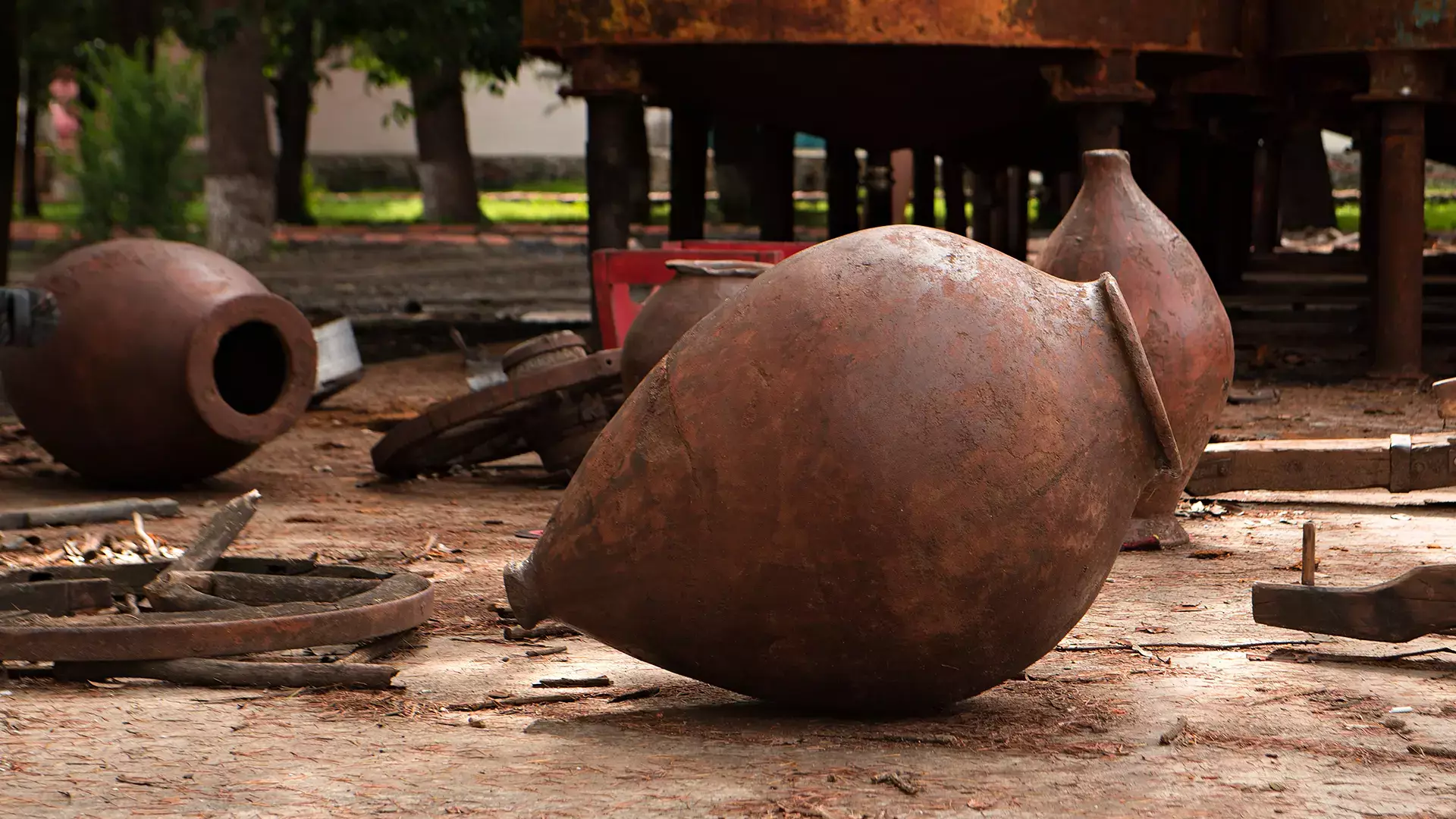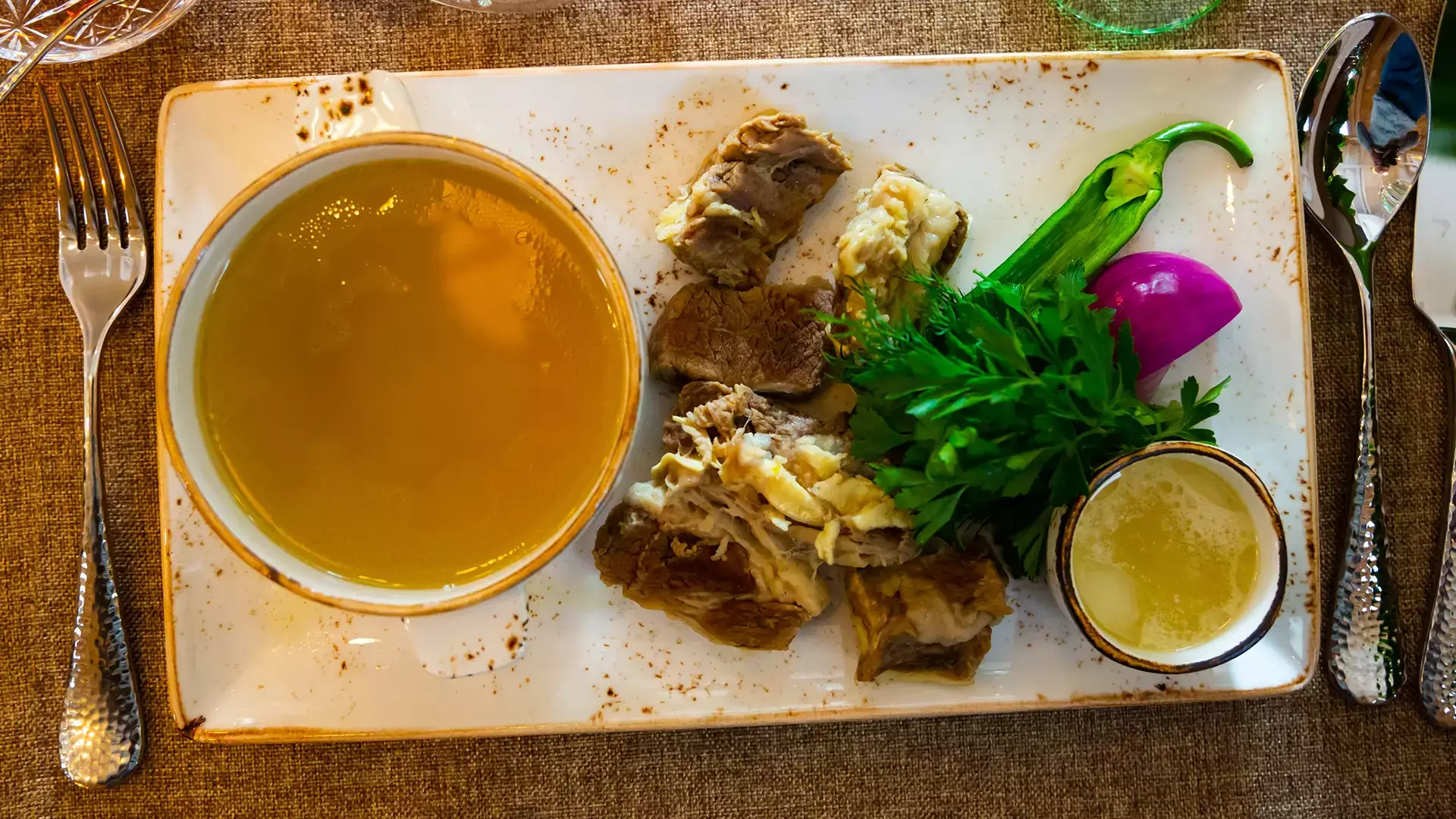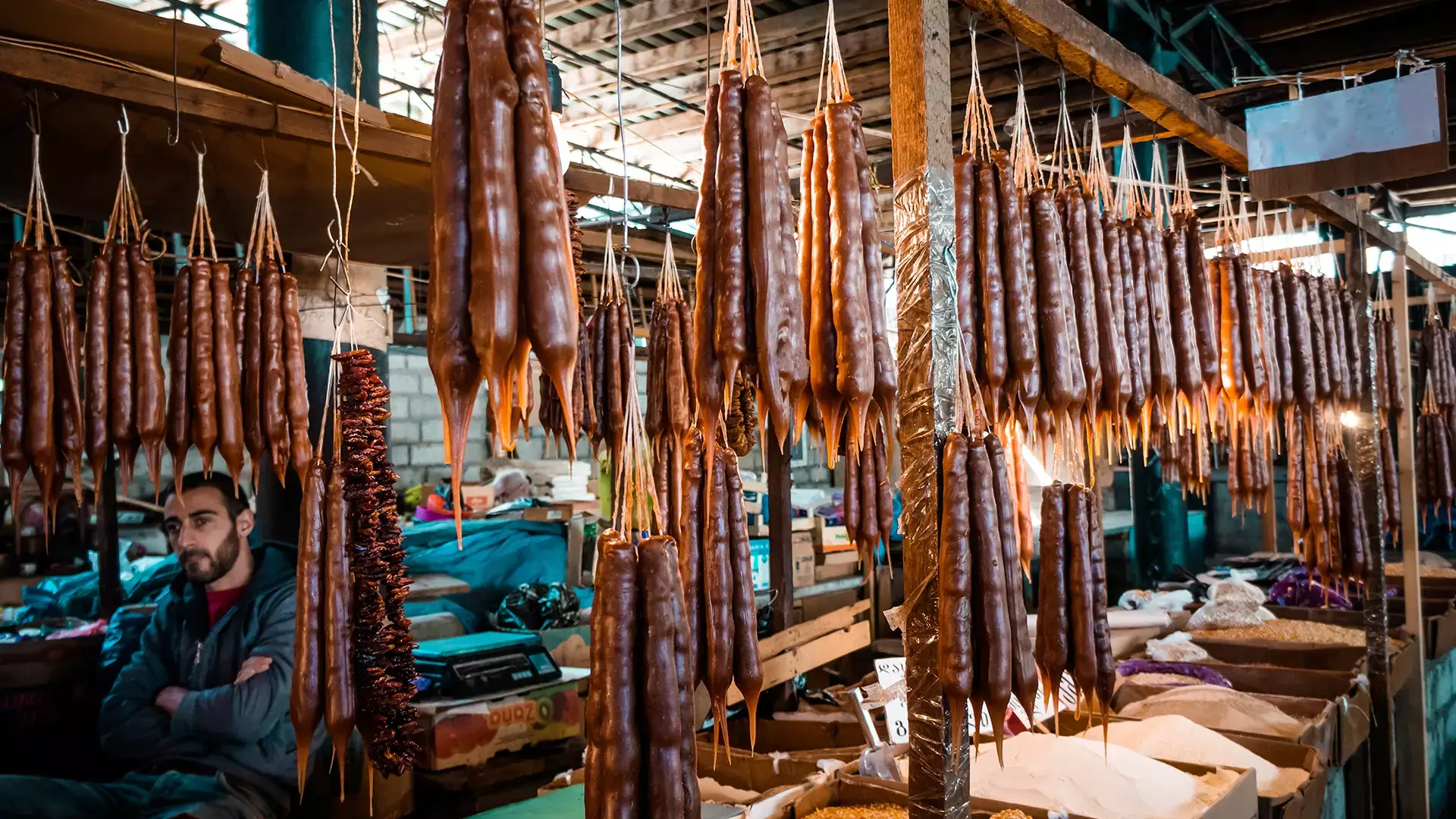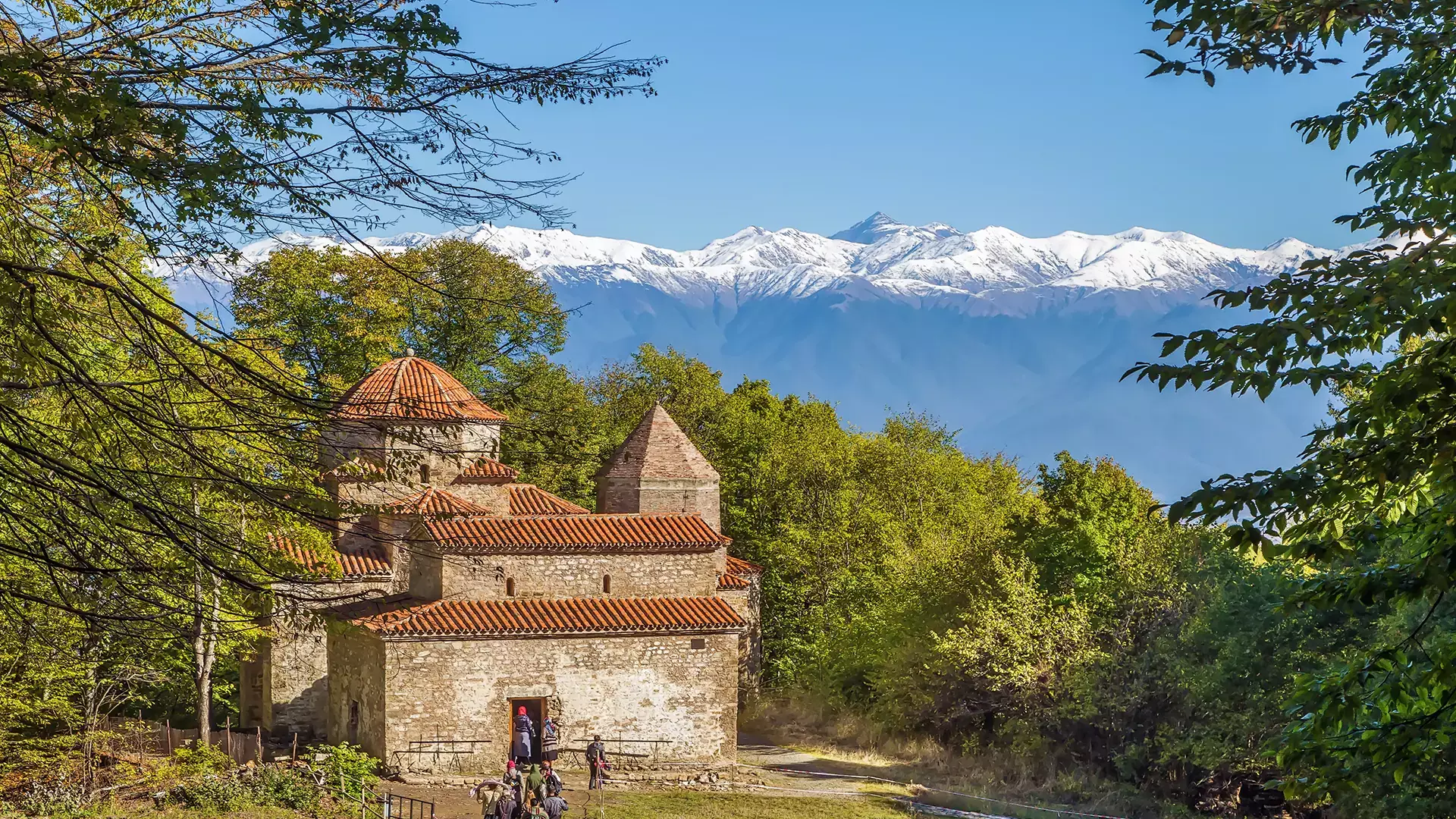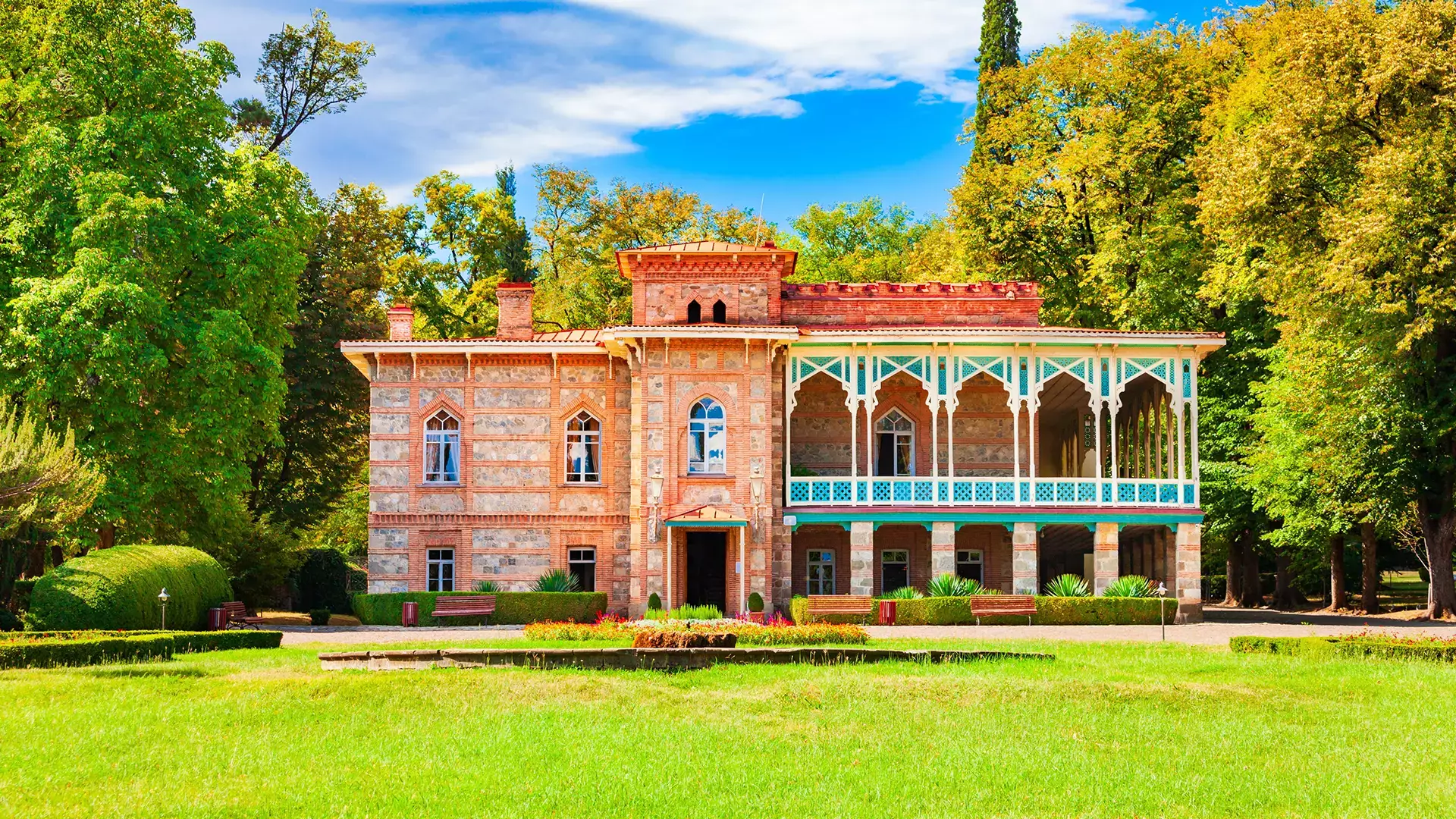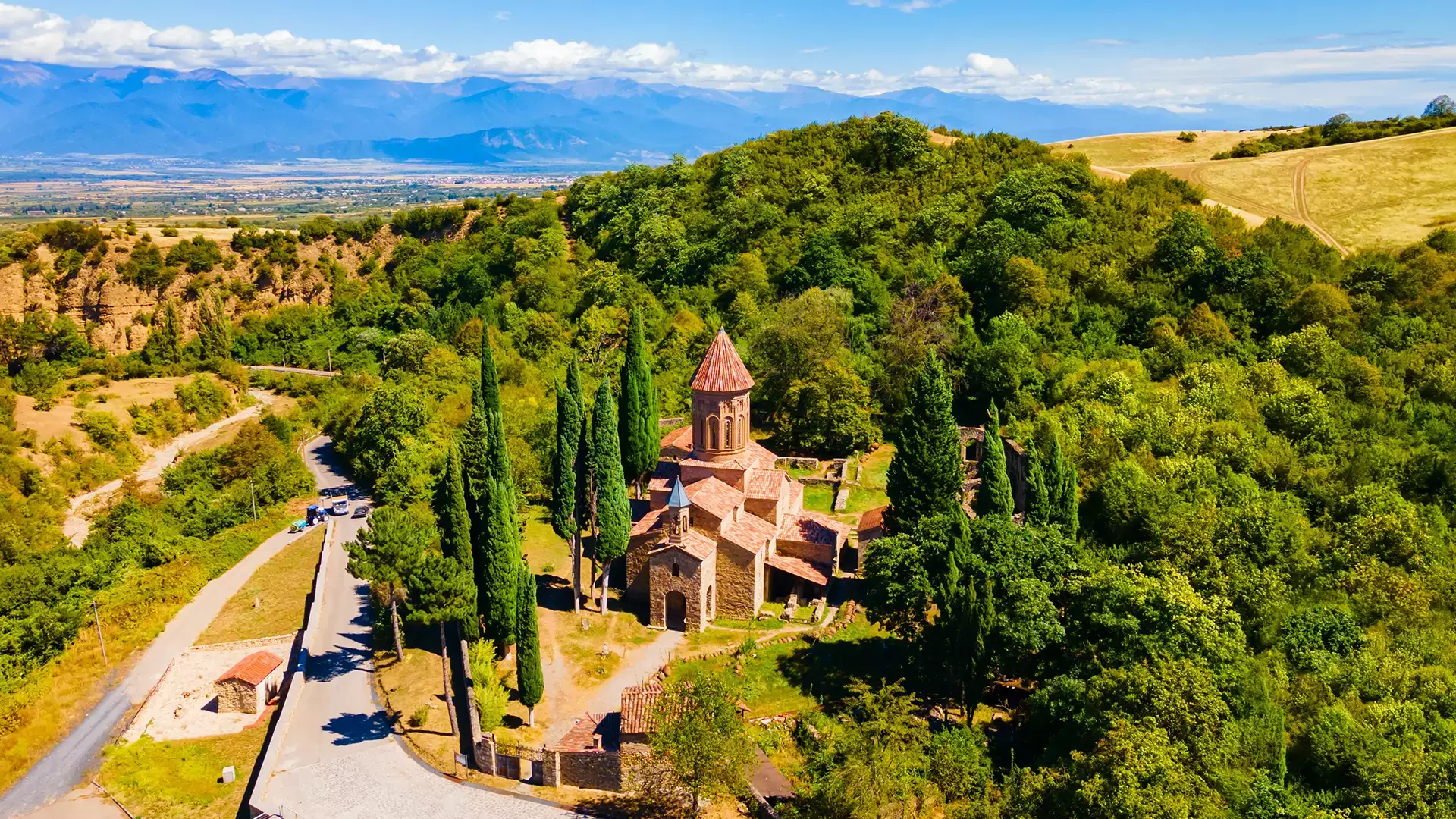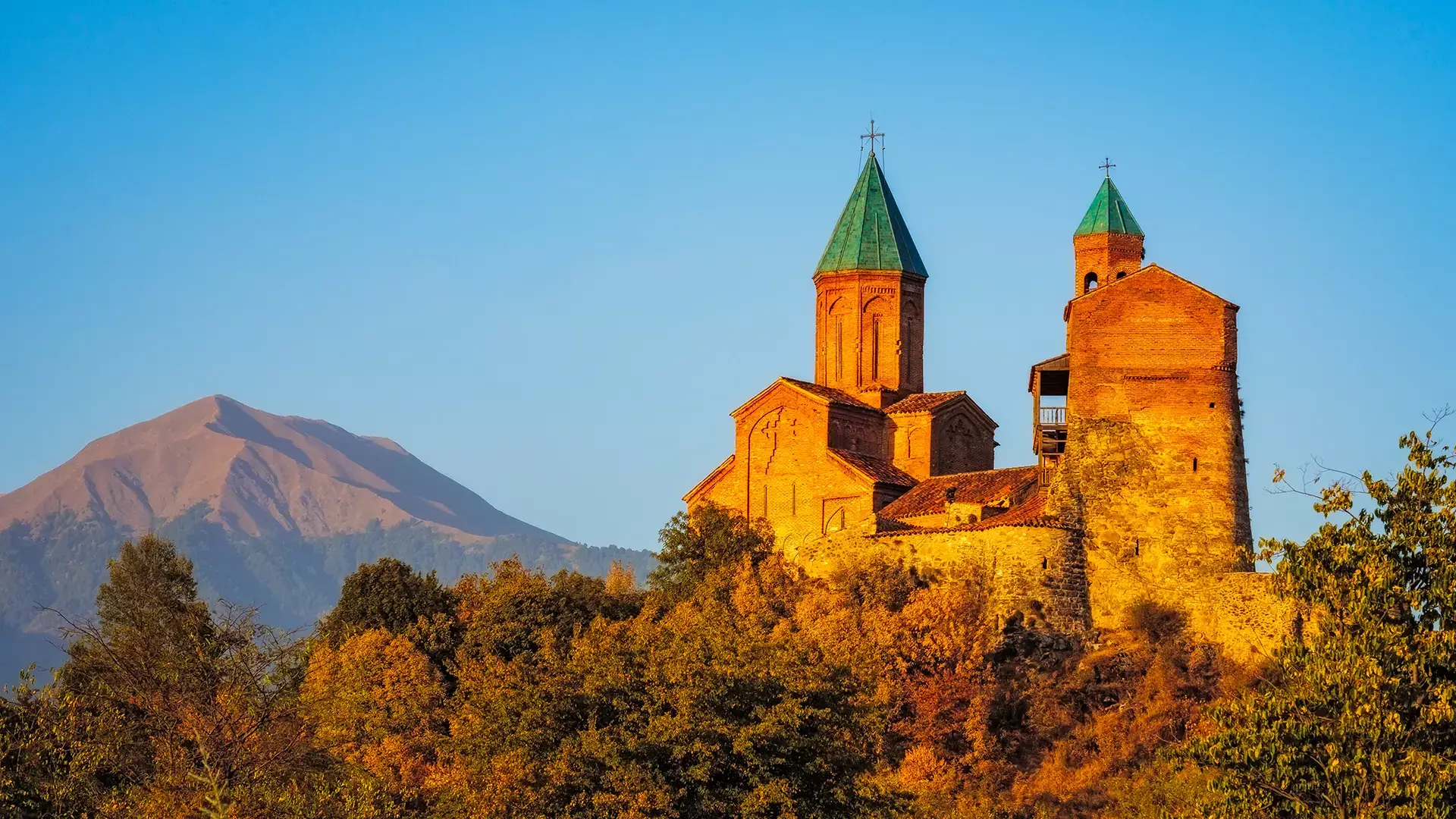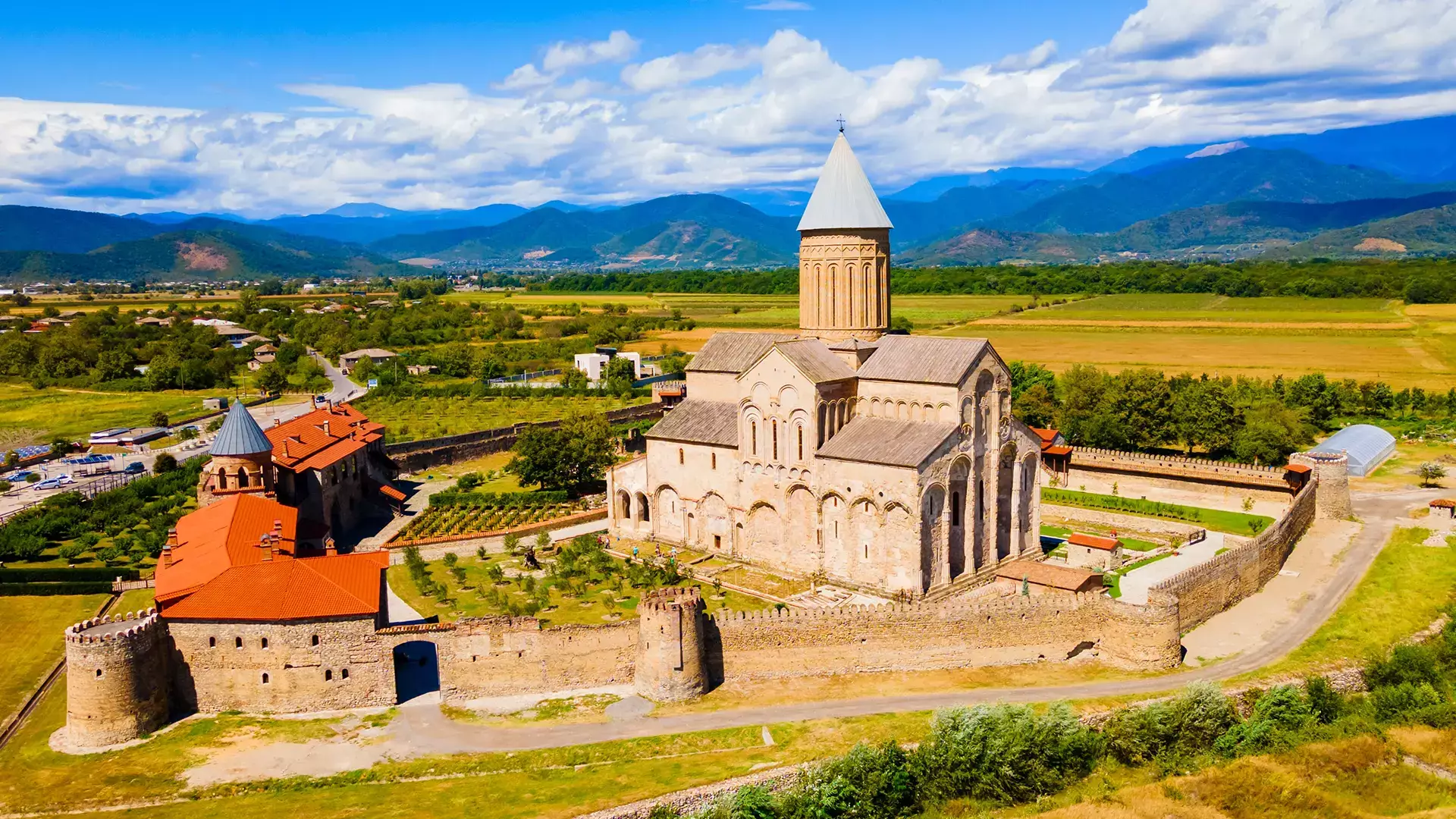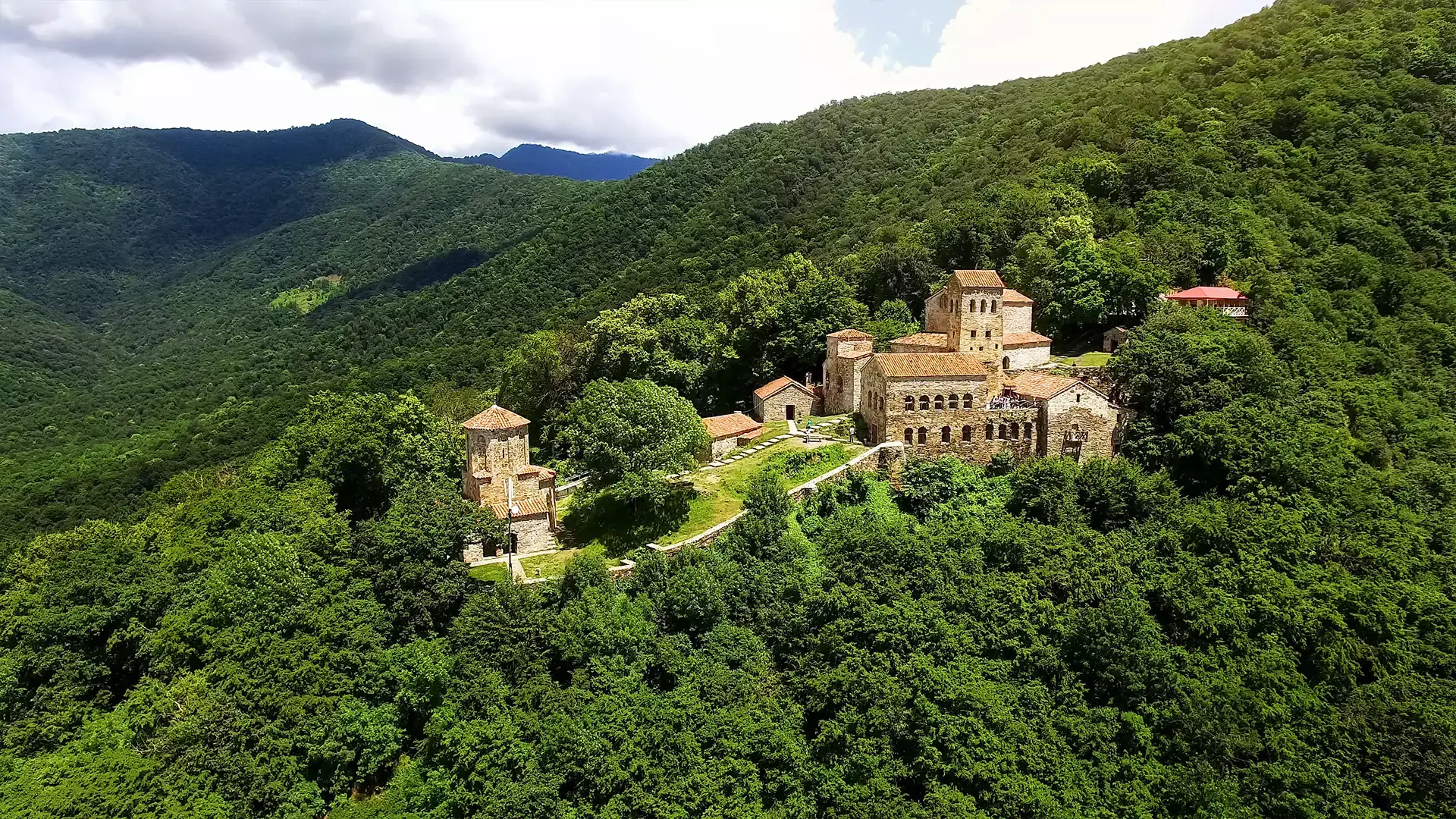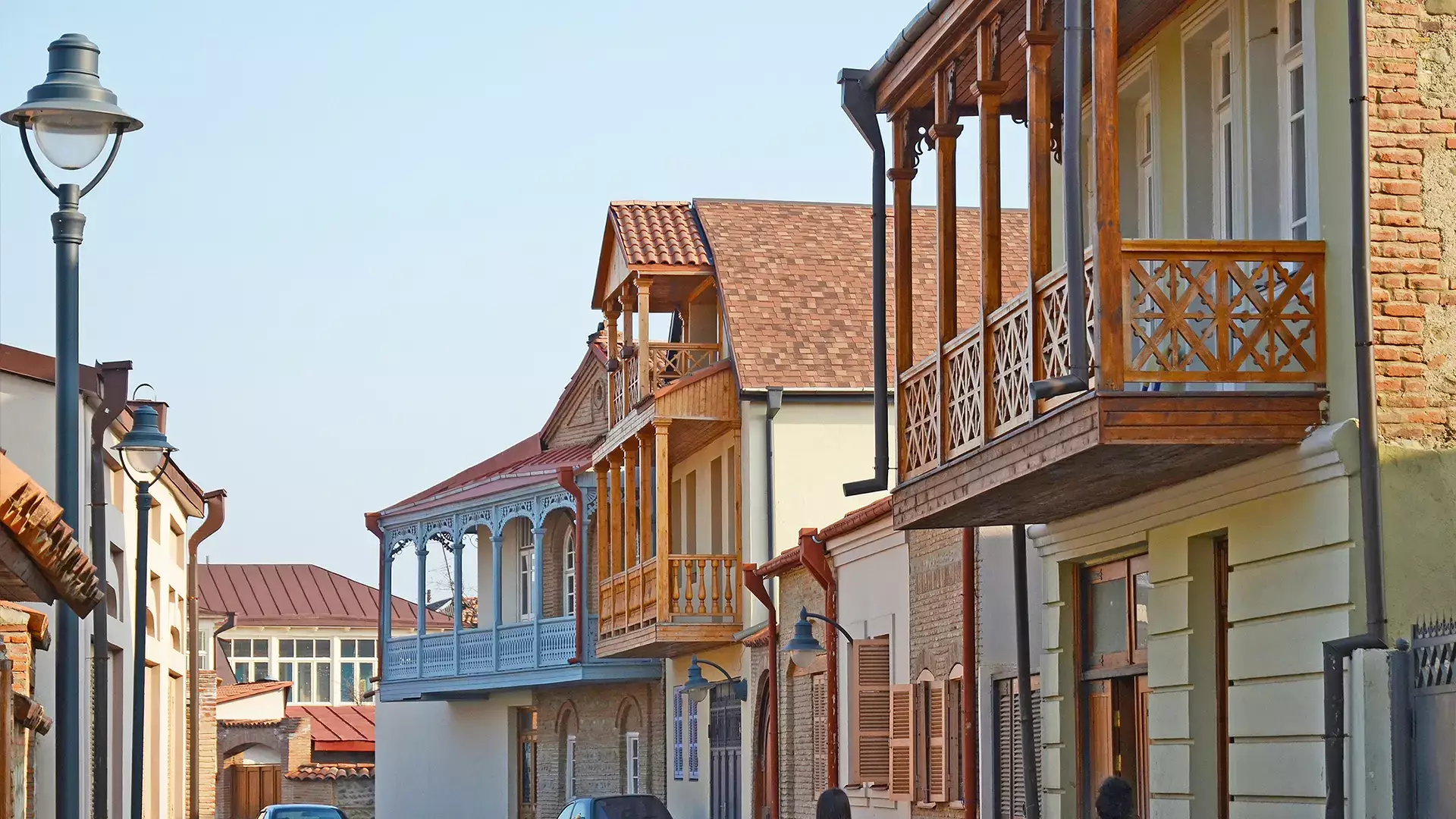Top 15 Things to Do and See in Telavi, Georgia
Today, Telavi is the main city and administrative center of Kakheti, but its roots can be traced all the way back to the Bronze Age. While much smaller than Tbilisi or Batumi, it was once a political center of the Kakhetian Kingdom and played a crucial role in the region's history.
Its primary architectural heritage and historical sites have been preserved carefully, leaving compelling proof of Telavi's historical significance to this day. Whether exploring the remnants of the medieval castle walls, visiting towering cathedrals that have survived centuries of upheaval, or being invited into a local brick-walled marani (wine cellar) that has endured several generations, the city offers a uniquely deep look into Georgia's storied past.
Whether you want to learn more about the country’s history or are eager to absorb Georgian culture, Telavi has you covered. To make the most of your time here, we’ve drawn up a list of the top 15 things you have to experience once in this historic city.
Explore the Batonis Tsikhe Historical Complex
Undoubtedly, Telavi's most significant landmark is Batonis Tsikhe ("Lord's Fortress"). Initially a Persian-style castle, it was first built in the 17th century and served as the residence of the Kakhetian kings. Over the centuries, it has been damaged and restructured several times, meaning that only some of the original sections survive to this day. Most of the remains that have reached us are from the 18th century when the building underwent major reconstructions during the rule of Erekle II, to such an extent that these days it's better known as the Palace of Erekle II.
The exterior is unfurnished, with sturdy stone walls and wooden lattices on the windows. Persian influences are more evident on the inside, where intricate tile work and stained glass floral patterns adorn the walls. The palace also showcases elaborate wood carvings and richly decorated ceilings with frescoes and motifs. The halls are narrow and the doorways stand low, in stark contrast with the sprawling Throne Room which boasts decadent high ceilings.
Once inside the complex, you'll find the Telavi State History and Ethnography Museum. The museum houses over 67,000 items, with exhibits ranging from ancient artifacts to more recent historical finds, providing a comprehensive look at how the city and wider region have developed over the centuries. Highlights here include traditional Kakhetian costumes, carpets, manuscripts, and a wooden sarcophagus.
Before reaching the exhibition of historic artefacts, you'll pass through several halls displaying the Ketevan Iashvili Collection. One of Georgia's most renowned art collectors, Iashvili bestowed her entire collection to her hometown upon her death. The collection comprises roughly 200 pieces, with about half of them currently on display, including pieces from renowned artists like Elene Akhvlediani, Lado Gudiashvili, Karl von Piloty, and Ivan Aivazovsky.
Take a Photo with King Erekle II
In front of Batonis Tsikhe stands King Erekle II’s statue, one of the most recognizable monuments in the country. Created by sculptor Merab Merabishvili in 1971, the bronze structure depicts King Erekle II in a commanding pose atop his war mount, holding a large sword. The statue stands approximately 8.5 meters tall (excluding the pedestal), overlooking the city from an impressive height.
If it weren't clear before, Georgians (and Kakhetians in particular) adore King Erekle II, and celebrate Erekleoba annually on his birthday, November 7. The festival entails a variety of cultural and educational activities, traditional games, martial arts demonstrations, and, of course, numerous stalls serving food and wine.
Visit the Legendary Giant Plane Tree
The giant plane tree, sometimes called the “Giant Sycamore” (or simply "Telavi's Chadari”), is, without doubt, the most famous tree in the whole of Georgia.
Located a 2-minute walk from Batonis Tsikhe (or a 10-minute walk from Nadikvari Park), the plane tree is impossible to miss: it stands at a commanding height of over 40 meters while its trunk has a circumference of about 12 meters. Not only is it the largest tree in Georgia, but it is also the oldest with its age estimated to be somewhere between 900 and 1,000 years.
The tree holds great cultural significance for the locals. Legend has it that King Erekle II often sat under its sprawling branches to inspire him as he made important decisions about his kingdom. When guests of some importance visited the city, it was customary to receive them underneath the tree.
In January 2024, the giant plane tree was given the official status of "Protected Tree of Local Importance," the first title of its kind in Georgia. This means that the tree gets a dedicated annual budget to cover the costs of its care, protection, regular diagnostics and treatment, as well as small infrastructural works.
The locals believe that if you make a wish standing underneath the plane tree, it'll come true, and that its powers are particularly strong in winter, when covered in snow.
Trek Up to Nadikvari Park for the Best Views
Nadikvari Park is perched on a hill about a 6-8-minute walk up from the Batonis Tsikhe complex. Its lush lawns, cobbled paths, an amphitheater, and several designated playgrounds for children have made it the go-to place in Telavi for relaxation for locals and visitors alike.
The park's most notable feature is its observation deck, from which breathtaking panoramic views of the Alazani Valley and the majestic Caucasus Mountains open up. Ideal for leisurely strolls, picnics, or simply soaking up the serene atmosphere, Nadikvari Park is a must-visit for anyone who simply wants to relax, clear their head, and savor the vistas (perhaps with a bottle of Kakhetian wine).
Wander Around Historic City Center
Once you've had your fill of Telavi’s wondrous views, descend back to the city center via Nadikvari Street. Along this short street you’ll find a small collection of beautifully preserved red brick buildings dating back to the 19th and early-20th centuries.
From Nadikvari Street, head back down to Erekle II Street, Telavi's main thoroughfare. Here, an eclectic mix of mid-19th-century heritage buildings share space with some of the best-preserved remnants of Soviet architecture. Most notable ones include Elene Akhvlediani Art School, a brick and cobblestoned mid-19th-century building with carved wooden balconies, the former City Hall, a yellow building with decorative arcades, the former post office, with its colonnades and arches, and one of the biggest structures in Telavi, a white building with a tower, open balconies, and a columned passage.
Follow the street all the way to its end then and cross over to Cholokashvili Street, known for its charming wooden balcony homes dating back to the 19th and early-20th centuries. These heritage homes feature intricate wooden carvings and beautifully preserved facades, putting them among the most picturesque parts of Telavi's architectural scene.
The entire stretch from Nadikvari Park through Cholokashvili Street is only around 2 km, so even at a leisurely pace, the walk should take no more than 40 minutes.
Discover Kakheti Region's Wine Heritage
Kakheti is the heartbeat of Georgian wine culture, where winemaking traditions go all the way back for at least 8,000 years. Central to this heritage is the Qvevri winemaking, which involves fermenting and aging wine in large clay vessels buried underground, recognized by UNESCO for its significance, inscribed on its Representative List of the Intangible Cultural Heritage of Humanity.
Today there are plenty of restaurants and hip new wine bars in Telavi, well-equipped with long and varied wine lists. However, to get the true taste of the region’s wine, arrange a visit to a local vineyard. Many of them offer guided tours, showcasing the process from grape harvesting to fermentation in qvevris, along with (of course) a generous wine-tasting session.
Top tip: When in Telavi’s restaurants, stick to ordering qvevri wines. Of note, Saperavi (a dry, rich, full-bodied red) and Rkatsiteli (a dry and fruity amber wine) are available almost everywhere.
For a truly in-depth experience of Georgian wine, try to schedule your visit for mid-fall. During this time of year comes the highlight of the wine calendar, Rtveli - the traditional Georgian harvest, which peaks from mid-September to mid-October. During Rtveli, you can participate in grape picking, witness the pressing process, make churchkhela (traditional Georgian sweet made with thickened grape juice and walnuts or hazelnuts), and enjoy a traditional feast (supra).
Enjoy Local Specialties
Telavi's culinary scene is rich and diverse, with the Kakheti region's own traditional dishes intermingling with the classics of other Georgian regions. You'll easily find most Georgian dishes on the menu, from Imeretian phkhali to Racha's shkmeruli, but we suggest sticking to the local Kakhetian specialties.
Kakhetian cuisine centers quite heavily on meat. Mtsvadi, marinated pork, lamb, or veal barbecued in a traditional Georgian style is a particular favorite. Other must-tries here include Telavi-style khinkali (dumplings) which differ a little from other varieties, khashlama (large chunks of meat boiled with aromatic spices), chikhirtma (chicken soup renowned as hangover cure), and chakapuli, a seasonal late spring stew, prepared with lamb or kid (goat), with green cherry plums, and lots of herbs including tarragon.
Dairy is also a major feature of Telavi cuisine, with cheese particularly ardently loved. Nadughi (fresh curd cheese) khinkali with ghee is another local favorite. Artisanal cheesemaking has become popular here in recent years, with small-scale manufacturers slowly emerging as tourist destinations like maranis before.
Shop Around at Telavi Bazaar
About a 15-minute walk from Batonis Tsikhe will lead you to Telavi Bazaar (Telavi Market), the main market in the whole Kakheti region. Records show that Telavi has been a bustling center of regional commerce since at least the 17th century, and this market is widely thought to have operated since those times.
Its architecture and layout accommodate a wide variety of vendors, creating a lively and colorful but also well-organized environment, with separate sections dedicated to different product groups.
Top tip: While visitors will find a range of fresh produce here including fruits, vegetables, spices, and meat, we’d advise seeking out local specialties, like churchkhela, sauces, and fruit preserves. The Bazaar is particularly well known for its selection of dairy products, including various types of traditional Georgian cheese, cottage cheese, and nadughi. You can also sample and purchase local wines and chacha (Georgia’s potent equivalent of raki).
Climb the Hill to The Flag Monument
Perched atop Zuzumbo Hill, the Flag Monument is possibly the most original - and perhaps the most overlooked - site in Telavi.
The monument is surrounded by a massive curved concrete wall. While one edge of it stands straight and tall, the other twists into a zigzag pattern, the wall forming the shape of a flag fluttering in the wind.
At the inner center of the wall is a bas-relief image of a woman holding a headscarf above her head. The lower part of the monument is decorated with three large stone statues of large solemn-looking men with their heads bowed.
In truth, little is known about the statue. We do know that it was installed some time in the 1970s as a memorial to fallen heroes, but we do not know when exactly it was installed or the identity of its creator. The Flag Monument is little known even among Georgians who aren't Telavi locals. A staggering sight surrounded in mystery, it can easily be classified as a truly hidden gem.
The monument is located about 2.5 km from the city center (a 30-minute brisk walk or a 10-minute drive). If choosing to walk, beware that the incline becomes rather steep towards the end. However once you get there, you’ll catch breathtaking views from one of the city's highest points on Zuzumbo Hill.
Stroll Through Woods for Old and New Shuamta Monasteries
If you have access to a car and are up for a short scenic drive, set the SatNAv for the base of the Gombori Mountains, and be sure to include the Shuamta monasteries in your itinerary. Yes, monasteries, plural. There are two of them,
Approximately 9 km (a 15-20-minute drive from Telavi center) is Akhali (New) Shuamta. Built in the mid-16th century by Queen Tinatin, the wife of King Levan II of Kakheti, it features distinctive architectural elements, including a cross-domed church made of brick. The church walls are adorned with frescoes depicting scenes from the Old and New Testaments and portraits of King Levan II, Queen Tinatin, and their son. Today, Akhali Shuamta is an active nunnery, so visitors are advised to keep quiet and respectful when checking out this religious site.
Around 2 km further up the road (about a 3-5-minute drive), surrounded by woods, lies Dzveli (Old) Shuamta. This complex includes a 5th-century basilica, a 7th-century domed church, and a smaller 7th-century church. These cobblestone constructions and travertine cornerstones are significant examples of early Christian architecture in Georgia. The monastery hasn't been active since the 16th century (when New Shuamta was built) but it remains accessible and of great interest to visitors.
Take a Trip to Tsinandali
Another thoroughly worthwhile short trip near Telavi is Tsinandali. Just a 15-minute drive eastward from Telavi city center (approx. 9 km), and you'll be right at the gates of Alexandre Chavchavadze House-Museum.
Built in the early 19th century, this staggeringly beautiful palace for many decades served as a cultural hub, welcoming poets, diplomats, and artists of the day. Now, the palace has been renovated painstakingly to recreate the atmosphere of a bygone era, and showcases a collection of artifacts, manuscripts, and personal items from the Chavchavadze family.
Surrounding the house-museum is a sprawling 18-hectare garden designed by European landscapers hired by the Prince. The first garden of its kind in Georgia, it features exotic plants imported all from around the world. The estate also includes one of Georgia's earliest wine cellars, where Alexandre pioneered the bottling of Georgian wine in the conventional European style.
Explore the Ruins of Ikalto Academy
Another attractive option for a short trip from Telavi is Ikalto, one of the most important cultural-scholastic centers in Georgian history. And it takes only 10 km and a 20-minute drive from Telavi center to reach it.
Ikalto Monastery was founded in the 6th century by the Assyrian Father Zenon and played a pivotal role in fostering religious education in Georgia. The Assyrian Fathers, a group of 13 monastic missionaries from Mesopotamia, were crucial in establishing monastic traditions and ecclesiastical learning throughout the Kakheti region.
The monastery gained further prominence in the late 11th century when Arsen Ikaltoeli established Ikalto Academy, under the reign of King David IV. This academy became a major cultural and educational center, teaching theology, philosophy, and various sciences. Today, set amid a serene landscape, visitors can explore its ruins including ancient churches and educational buildings, which are lasting reflection of Georgia's rich religious and intellectual heritage.
Detour to Gremi Archangels Complex
Another medieval religious site well worth a short journey from Telavi is Gremi Monastery. Visible for many miles around from its perch, it stands about 20 km (a 20-25-minute drive from central Telavi).
Built by King Levan of Kakheti in 1565, the complex includes the Church of the Archangels, a bell tower, and remains of a three-story royal palace. The architecture here is a classic example of medieval Georgian masonry, with robust stone blocks and intricate carvings, particularly in the church's facades and the fortress walls. However, there are also noticeable Persian influences in the arched windows and the church's decorative elements, including rich frescoes painted in 1577, depicting religious scenes and royal figures, including King Levan himself.
The complex is built on a hilltop (undoubtedly a strategic decision), so visitors need to walk uphill from the base. But the walk isn't long or strenuous, and in the end, they get to explore the well-preserved structures and then climb the tower to enjoy panoramic views of Alazani Valley.
Admire the Majestic Alaverdi Monastery
Another short drive - about 30 minutes - will take you to what is, possibly, the most impressive medieval structure still standing in Georgia today. 21 km away from Telavi city center lies Alaverdi Monastery.
The first church on this site was built in the 6th century by another of the legendary Assyrian Fathers, Joseph of Alaverdi. The structure in its current form was built in the 11th century, and is one of the most impressive feats of medieval Georgian architecture. Along with Oshki, Svetitskhoveli, and Bagrati, Alaverdi Cathedral is considered one of the Great Cathedrals of Georgia.
The cathedral is renowned for its towering dome, intricate frescoes, and massive size.
Standing at a height of over 55 m (180 ft), it was the tallest church in Georgia until the construction of the Holy Trinity Cathedral of Tbilisi was completed in 2004. Today, it remains the second tallest in the country. Surrounded by a fortress wall, the complex includes a bell tower, refectory, and remnants of a summer palace. The frescoes inside, dating from the 11th, 15th, and 17th centuries, are testament to rich artistic traditions of the era.
Walk Through the Past at Nekresi Archeological Complex
If you plan to spend more than a couple of days in Telavi, then set some time aside to visit the Nekresi Archeological Complex. It’s a little further away, at approx. 35 km, or a 45-minute drive from central Telavi.
The archeological site consists of a still-functioning monastery, foundational remains of a large Zoroastrian fire temple, ruins of two large basilicas called Chabukauri and Dolochopi, and remains of a stone winery (dated 4th–5th century).
The monastery, founded by Abibos of Nekresi (yet another of the Assyrian Fathers) features a 6th-century basilica with a three-church layout, its solid walls separating the central nave from the side aisles. Another important structure here is the Church of the Archangel Michael, an 8th-century addition with a domed design supported by proto-pendentives and squinches. But the most unique part of the complex (and the most interesting to visitors) would be its unique mortuary chapel, notable for a vaulted crypt used for burials.
If you do decide to visit Nekresi, keep in mind that its hilltop location makes it somewhat complicated to reach, and the final stretch requires either a 15-minute, rather steep, hike or a short van ride.
How to Get to Telavi (as of 2024)
The distance from Tbilisi, to Telavi is around 94 km if you take the shortest route via the Gombori Pass. Depending on the mode of transportation (and the route chosen), the journey takes between 2 and 2.5 hours.
Meanwhile, the distance from Kutaisi to Telavi is approximately 300 km, and the journey can take anywhere between 4.5 and 5.5 hours depending on various factors, including means of transportation and traffic conditions.
From Batumi, Telavi is around 440 km away, taking around 6.5 to 8 hours to get from one city to the other (depending on the number and length of possible breaks).
The main problem is that while Telavi does have a Railway station (and worth a visit for train enthusiasts), it is not currently functioning. In fact, the entire Kakheti region is not presently served by train. So the road is the primary means of travel, either by car or marshrutka (minivan).
From Tbilisi, you can catch a shared taxi near Isani metro station, as well as a marshrutka near Ortachala Bus Station. There may also be options near Navtlughi Bus Terminal and Samgori metro station but do ask the locals. A seat in a shared taxi costs around 20-30 GEL depending on the season and demand (it's more expensive during high season). Marshrutka prices are lower at around 10 GEL and fixed (but these too may be subject to increase in the future).
There are no official schedules (or gathering spots) for marshrutkas from Kutaisi or Batumi. You'd probably need to rely on helpful locals putting you in contact with a driver. And you’d have to ensure that driver is en route that day.
Another option is to use a ridesharing service like Bolt, albeit this isn't a budget-friendly option. Depending on demand, a ride from Tbilisi to Telavi will cost around 160-200 GEL, while a ride from Kutaisi would cost 250-280 GEL, and from Batumi it would cost 400-450 GEL.
Essentially, if going from Kutaisi or Batumi, the shrewdest course of action would be to take a train to Tbilisi first, and then pick from the various options for onward travel to Telavi.
Cookie Policy

